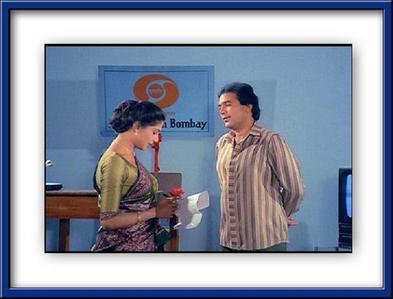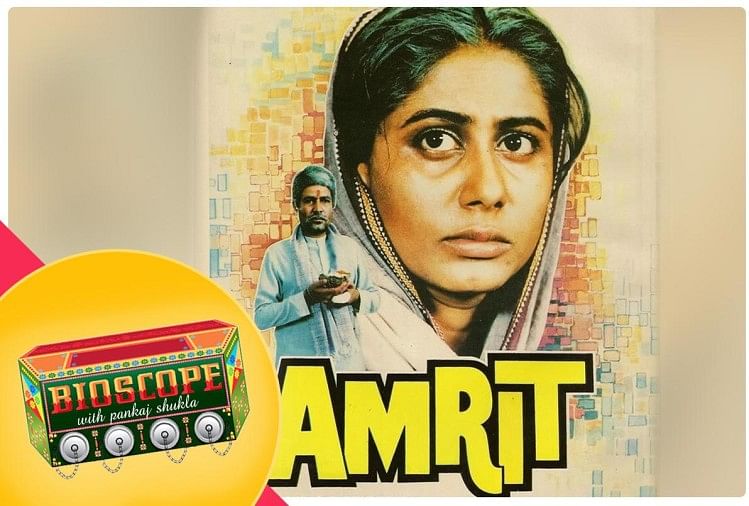

Smita had qualms about going the whole commercial hog (lore has it that she cried after shooting Aaj rapat jaaye). Her peripheral roles in Badle Ki Aag, Dil-e-Nadaan and Qayamat were a waste of raw stock and her rare appeal. Ramesh Sippy's Shakti opposite Amitabh followed in 1982.Īt this stage, Smita's often indiscriminate choice of films left her as bewildered as her fans. Their together item song and dance rain number Aaj rapat jaaye showed her in an entirely new light. She won new fans with the blockbuster Namak Halal opposite Amitabh. In the early 1980s, Smita finally relented and trained her sights on commercial cinema. Īs long as it revealed the psyche of her character, Smita was game to go the extra mile - she did a bathing scene in the open for Chakra, some intense love-making scenes in Aakrosh and even kissed Kulbhushan Kharbanda's toes in Arth.
#Smita patil rajesh khanna movie movie
In a bid to sate her gnawing need for good roles, Smita ventured into the regional arena too with the Marathi movie Jait Re Jait, Mrinal Sen's Bengali film Akaler Sandhaney and Ketan Mehta's much acclaimed debut in Gujarati cinema, Bhavni Bhavai. She worked with Satyajit Ray in his television film Sadgati. With Govind Nihalani she worked in the scorchingly intense Aakrosh, where she played a tribal woman who is brutally raped and murdered. For the latter, she visted jhopadpatis (slums) as part of her research and it culminated in another National Award. Smita staunchly believed in realistic cinema and accepted offers from new wave directors like Muzaffar Ali and Dharamraj [ Chakra, 1981). Smita played the complex role of an actress struggling to lead her life on her own terms (through her chequered history with four men - Amol Palekar, Anant Nag, Naseeruddin Shah and Amrish Puri) and imbued it with an insight that belied her 22 years! A fictionalised biography of Indian actress Hansa Wadkar, Bhumika won Smita the National Award for Best Actress. Next, Benegal cast her in a more demanding role - Bhumika. Smita sprang to the spotlight with Benegal's Manthan, where she playedĪ Harijan woman who spearheads a revolt at the milk co-operative. For a while, she even seemed to have won him away from Shabana Azmi, with whom the filmmaker had done some excellent work in Ankur and Nishant. After he cast her in the children's film Charandas Chor, and in a small role in Nishant, Smita seemed to suddenly hold a monopoly over Benegal. One of the major beneficiaries of the mid-1970s efflorescence of the art movement in Hindi cinema, Smita's film career got off the ground courtesy mentor Shyam Benegal. Smita shared a special relationship with the camera and, incidentally, she was very good behind the camera too: an exhibition of photographs clicked by her was held posthumously. Always a bit of a rebel, she would grin when people complimented her on looking lovely in the saris she sported for the telecasts because minutes before going on air, she would have hurriedly wrapped the sari over her jeans. Her dusky beauty and large eyes drew attention. Her first tryst with the camera was as a television newscaster. Born in Pune, Maharashtra, she studied at a Marathi medium school. Smita was the daughter of a minister and a social-worker mother. The actress who was a fascinating amalgam of a steel-strong will as well as heart-tugging vulnerability, deserves the 'amazing actress' legend that has been built around her. Then there is Smita Patil who passed away in 1986 at the shockingly young age of 31. Or Meena Kumari (who passed away at 40), or Madhubala (who died at 36).

Witness the icon industry that has sprung around Marilyn Monroe and James Dean. T here is something about dying young that perpetuates fame.


 0 kommentar(er)
0 kommentar(er)
